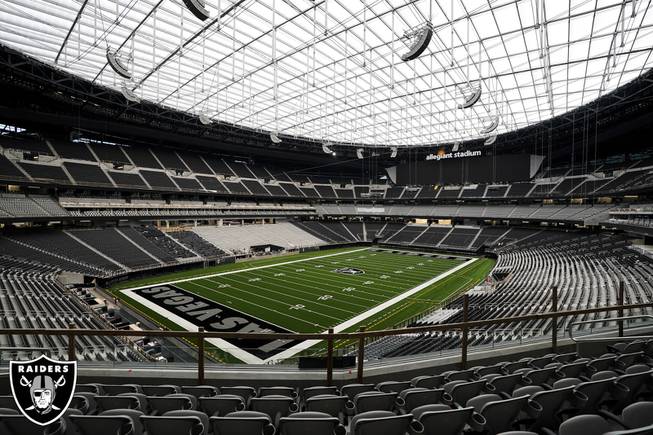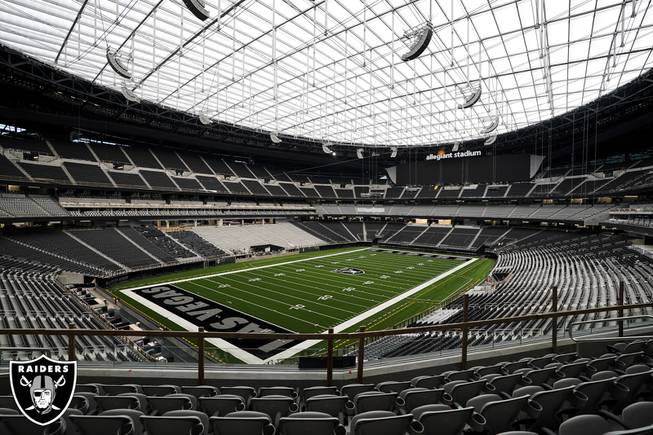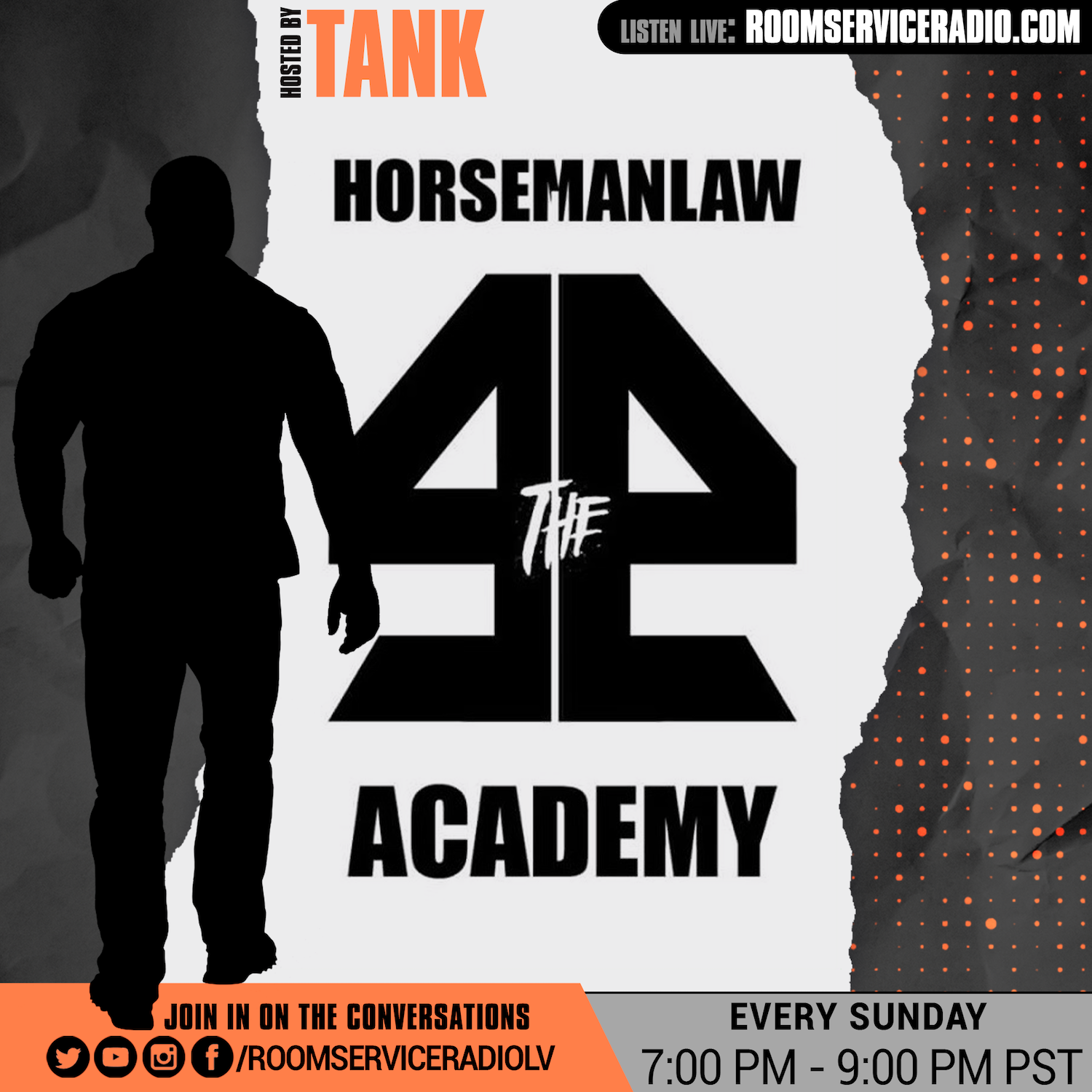
Courtesy
Progress pictures for the construction of Allegiant Stadium, home of the Las Vegas Raiders, Friday, July 3, 2020, in Las Vegas, Nev. (Las Vegas Raiders, Matt Aguirre)
Thursday, Sept. 17, 2020 | 2 a.m.
As we’ve driven past the 62-acre Allegiant Stadium construction site these past few years, we’ve marveled at the way it all came together—and how quickly. Ground was broken in September 2017, and here we are three years later, preparing for the Las Vegas Raiders’ first game there on September 21.
Due to pandemic restrictions, the public won’t be allowed inside this NFL season, or for any other events for the foreseeable future. In the meantime, here’s our look around the place, piece by eye-popping piece …
Playing surface
The venue’s retractable field system allows for either natural grass or turf. It’s stored on a movable tray operated by 540 electrically powered wheels, and takes about an hour to move in or out of the stadium. The tray features a built-in irrigation system.
Open-air viewing
The facility’s north side features four sliding doors, which will allow the stadium to be opened for fresh air and sunlight—and will provide a breathtaking view of the Strip. The 80-foot by 215-foot opening are said to create a one-of-a-kind viewing experience. “The sliding doors are pretty unique,” said lead stadium builder Eric Grenz of Mortenson Construction.
The domed stadium is topped by a 7-acre ethylene tetrafluoroethylene cable net roof system suspended by 100 stainless steel cables—creating the sleek, gradual curves of a futuristic luxury vehicle. “The inspiration behind that was for it to look like a sports car, kind of like a Tesla,” Grenz said.
Instant replay
If you want to see that touchdown again on game days, simply look south. Allegiant’s south end will feature a massive, 254-by-49-foot interior video board. When the Raiders tested it in late June, officials said the test displayed the most pixels that had been seen on a screen at one time. At the north end of the stadium, you’ll find twin 122-by-49-foot screens near the Al Davis Memorial Torch.
• 65,000: seating capacity
• 19 million: total weight, in pounds, of rolling natural turf
• 127: number of suites
• 8,000: number of club seats
• 33: months it took to build the stadium
• 12,000: number of construction workers who worked on it
• $1.97 billion: total cost of the stadium
Eternal flame
One of the most unique aspects of the stadium is an 85-foot, 3D-printed torch, which pays tribute to the late Al Davis, father of team owner Mark Davis. After Al Davis died in 2011, the Raiders began having former players and other celebrities light a large torch at the Oakland-Alameda County Coliseum in California, the team’s former home stadium. The Al Davis Memorial Torch on Allegiant Stadium’s north side will carry on that tradition—with a bigger version.
Mortenson Construction’s Eric Grenz said the torch is likely to be classified as the largest 3D-printed structure in the world. “We’ve put in an application to get it put in the Guinness Book of World Records,” he said.
Chowing down
Raiders owner Mark Davis has become a regular at Ferraro’s while the team has transitioned to Las Vegas, so it’s only fitting the Italian favorite will be part of the new stadium, with both a restaurant and quick-serve kiosk on site.
Additional food options include Cosmo burger and shake hub Holsteins; loaded hot dogs from Neon Dogs; wine, cocktails and beer from The 1960; tequila everything from Casamigos; quick-serve south-of-the-border flavors from Mary Sue Milliken and Susan Feniger’s BBQ Mexicana; Southern-style cue favorites from Rollin’ Smoke Barbeque; beverages from Area 41; square pies from P2izza; and fusion food truck favorites from FukuBurger.
Club life
MGM Resorts International, the official gaming partner of the stadium, will bring the luxury MGM Resort Club to the venue, complete with full-service bars, a luxury lounge and upgraded stadium seating for game viewing.
You’ll find MGM branding throughout the stadium, as an agreement grants the resort giant prominent signage at all events and naming to the west VIP entry and drop-off zone.
No cash
Allegiant will be a cashless venue, at least for NFL games. Team officials say going cashless will allow for faster service and shorter lines inside the stadium. Cash also won’t be accepted at any stadium-controlled parking location.
Season ticket holders “overwhelmingly” agreed, through a survey, that going cashless was the best payment option. The decision was also made to follow recommendations by the Centers for Disease Control and Prevention urging businesses to use contactless payment systems to help limit the spread of COVID-19.
Park it
Since fans won’t be attending Raiders games at Allegiant Stadium this NFL season, there’s more time to shore up—and possibly alter—plans for parking near the venue.
Heading into the summer, stadium operators identified some 25,000 available parking spaces near Allegiant Stadium, about 15,000 of which were considered to be within walking distance. Around 7,000 spaces were identified for those who wish to tailgate before and after games. That includes a designated lot with room for about 1,800 vehicles near Valley View Boulevard and Reno Avenue.
Local leaders have agreed to close the bridge on Hacienda Avenue to vehicle traffic five hours prior to kickoff on game days, which should allow fans to park along the south end of the Strip and walk to the stadium.
The Raiders have said they’ve identified about 11,000 available parking spaces at resort properties near the stadium, which could serve as parking options for many. A lot at Warm Springs Road and Interstate 15, not within walking distance, will have room for about 1,700 vehicles, and there will be shuttle service to and from that lot to the stadium.
Depending on location and proximity to Allegiant Stadium, most parking spaces are expected to cost between $10 to $100.
This story appeared in Las Vegas Weekly.













